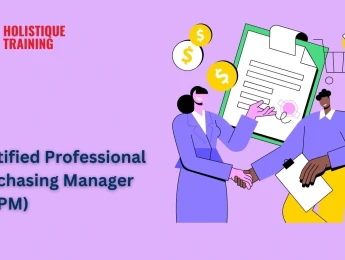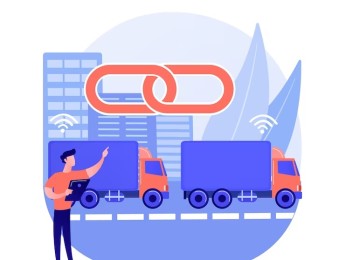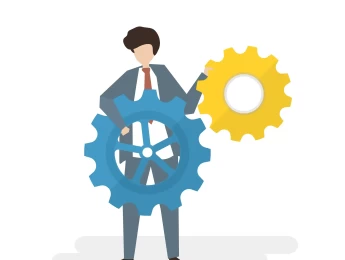e-procurement is selling and buying goods and services over a digital network. It can be global, over the Internet, or using a company’s intranet within an organisation. Using e-procurement, you can reduce your costs while improving productivity and transparency.
This course provides an overview of the key aspects of planning and implementing an e-procurement system to streamline operations, simplify data management, and decrease costs. In addition to examining strategies to manage e-procurement, you will investigate broader procurement topics, such as the impact of supplier management and global sourcing.
Upon completion of this course, participants will be able to:
- Understand the principles and benefits of e-procurement.
- Detail the requirements and implementation of an e-procurement system.
- Develop strategic purchasing plans and methods to improve internal customer service.
- Use Key Performance Indicators (KPIs) to optimise your procurement plan.
- Leverage supplier management to minimise procurement risks.
- Comprehend and practise key negotiation tactics.
This course is intended for:
- Purchasing, Procurement, Supply Management, Operations, and Finance professionals
- Professionals involved in planning and distribution
- Anyone looking to understand the development and implementation of e-procurement systems
This course uses a variety of adult learning styles to aid full understanding and comprehension. Participants will review case studies to highlight key areas of importance and possible areas for faults. They will be supplied with the best tools required for learning exercises to improve their skills. Participants will analyse the examples to thoroughly understand how these skills, techniques and methods apply in the workplace.
Day 5 of each course is reserved for a Q&A session, which may occur off-site. For 10-day courses, this also applies to day 10
Section 1: Conventional Procurement Systems
- Describe the purpose of procurement in organisations.
- Examine strategic sourcing.
- Evaluate supplier selection and performance.
- Discuss the relationship between performance and sourcing decisions.
Section 2: Developing an e-Procurement System
- Describe e-procurement and its benefits for an organisation.
- List the required steps for an e-procurement system.
- Examine the components and capabilities of an e-procurement system:
- Internal customer ordering and approvals
- e-Quotation preparation and evaluation
- e-Purchase orders
Section 3: e-Procurement Models and Negotiation Strategies
- Describe e-procurement business models.
- Discuss the principles of power negotiation.
- Examine methods to influence and persuade.
- Review strategies to negotiate under pressure.
- Outline techniques to prevent confrontation negotiations.
Section 4: Managing e-Procurement
- Examine e-procurement workflows and processes.
- Outline the key principles of managing an e-procurement system.
- Review hardware, software, and user administration for e-procurement systems.
- Discuss risks and security measures specific to e-procurement systems.
Section 5: Organisational Improvement and e-Procurement
- Describe the process of integrating an e-procurement system into an organisation.
- Identify possible integration challenges.
- Examine e-procurement and contract law.
- Review contract formation, e-trading, and the use of electronic signatures.
- List organisational changes required to support e-procurement.
Section 6: Developing a High-Quality e-Procurement System
- Identify the characteristics of world-class procurement organisations.
- Examine the role of category management and strategic sourcing.
- Discuss how to use the Kraljic Matrix in your segmentation strategies.
- List essential procurement skills and competencies.
- Develop a strong business case for the implementation of an e-procurement system.
Section 7: Evaluating Your Own Operation
- Review the importance and application of procurement benchmarking.
- Utilise a Spend and Opportunity analysis to optimise your procurement system.
- Develop Key Performance Indicators (KPIs) and a strategic procurement plan.
- Describe the role of material management in your supply chain.
Section 8: Planning for Continuous Improvement
- Identify the main drivers of procurement.
- Describe an agile procurement process.
- Examine the effects of supplier pricing and managing price.
- Review cost reduction strategies.
- Discuss the importance of digitalisation on the path towards e-procurement.
Section 9: Approaches to Supplier Management
- Outline the structure of a supplier classification system.
- Identify qualification methods for suppliers.
- List key supplier performance metrics.
- Discuss ways to manage procurement risks.
- Review components of contract management.
Section 10: Improving the Reputation of Procurement
- Examine the role of global sourcing and its risks.
- Describe the importance of market intelligence.
- Explore how to manage and engage stakeholders.
- Discuss ethics and corporate social responsibility.
- List ways to keep current in the procurement sector.
Upon successful completion of this training course, delegates will be awarded a Holistique Training Certificate of Completion. For those who attend and complete the online training course, a Holistique Training e-Certificate will be provided.
Holistique Training Certificates are accredited by the British Assessment Council (BAC) and The CPD Certification Service (CPD), and are certified under ISO 9001, ISO 21001, and ISO 29993 standards.
CPD credits for this course are granted by our Certificates and will be reflected on the Holistique Training Certificate of Completion. In accordance with the standards of The CPD Certification Service, one CPD credit is awarded per hour of course attendance. A maximum of 50 CPD credits can be claimed for any single course we currently offer.
- Course Code PO1-125
- Course Format Classroom, Online,
- Duration 5 days














